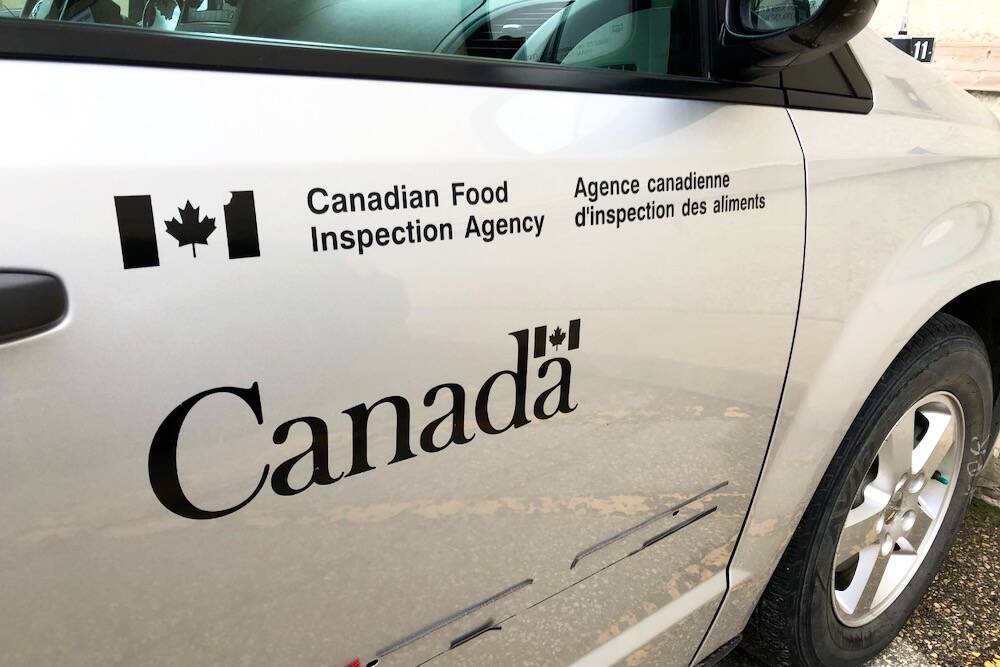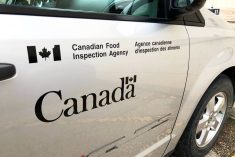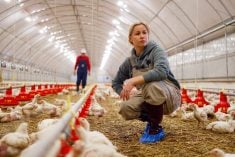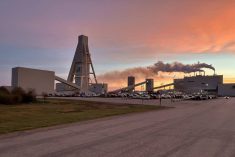CHICAGO, Ill. (Reuters) — U.S. hog and wholesale pork prices surged to their highest level in nearly two years yesterday as supermarkets fill meat cases with pork chops and ribs for summertime grilling and promotions for U.S. July Fourth holiday celebrations.
Hogs were already hard to come by after last summer’s historic drought hurt crops, drove up feedgrain costs and caused hog producers to shrink their herds.
“Tighter than expected hog supplies have packers, until they can cut kills to offset tighter numbers, behind the eight ball and scrambling to fill kill schedules,” Linn Group analyst John Ginzel said.
Read Also

B.C. ostriches culled, CFIA confirms
Ostriches on an embattled Edgewood, B.C. farm have been culled after a prolonged legal battle, the Canadian Food Inspection Agency has confirmed.
That demand has pushed up hog prices. Government data showed the average hog price on Thursday afternoon in the Iowa-Minnesota market, the largest U.S. hog market, at $103.31 per hundredweight, the highest since $104.53 on Aug. 15, 2011.
The wholesale pork price on Wednesday, or cutout in industry parlance, was at $101.33 per cwt. before easing on Thursday, according to the U.S. Department of Agriculture.
Wednesday’s pork price is the highest since the government began its mandatory pricing report in January. Using USDA voluntary pork prices, which were replaced by the mandatory report, Wednesday’s wholesale price was the most since $101.79 on Aug. 26, 2011.
Pork demand got a shot in the arm by shoppers switching from high-priced beef. Beef prices have soared in reaction to less production as drought reduced the cattle herd to its smallest in 61 years. Wholesale beef was a record high $211.37 per cwt before the U.S. Memorial Day holiday. Prices have since slipped but remain at historical highs.
“Beef prices have since come down after blasting through the $200 resistance level in May, but still remain too high relative to pork and chicken,” Ginzel said.
Bob Brown, an independent industry analyst in Edmond, Oklahoma, said wholesale prices for pork loins, a favourite for outdoor cookouts, have turned higher after trending lower prior to Memorial Day.
“That could have more to do with the drawdown in hog numbers than late-spring demand for grilling,” Brown said.
The appetite for pork has extended beyond U.S. shores. Brown noted that USDA pork exports over a recent four-week stretch this spring were up roughly nine percent from the previous four weeks.
“If you have the export data up about nine percent while the slaughter has come down, you have a double whammy,” Brown said, referring to higher pork prices.
The surge in hog and pork prices have not gone unnoticed by investors who buy and sell hog futures at the Chicago Mercantile Exchange.
CME hog futures notched two-year highs four days in a row this week and have been higher 11 consecutive sessions.
“Hogs have been on fire and likely pulling in fund investors and traders from the bearish live cattle market,” said Chicago-based Oak Investment Group president Joe Ocrant.
While the cases of porcine epidemic diarrhea virus have caused losses in some U.S. hog herds, analysts doubt the losses have been large enough to have contributed to the current tight hog supplies and higher pork prices.
“That is too quick and won’t happen until the fourth quarter because it impacts mostly baby pigs. And we don’t have a good feel for how many piglets were affected or how widespread the virus is,” Ginzel said.














